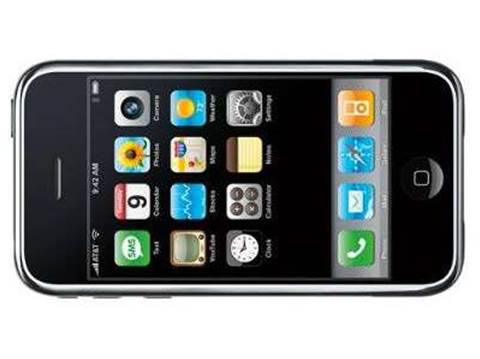An iPhone app developer that customised its VoIP client exclusively for NEC Australia has claimed in the Federal Court the vendor reneged on a licence deal and "secretly developed or obtained" a replica product to shut them out.
Hi-Tech Telecom launched the action against NEC Australia Monday in the hope of being paid for work it claims to have completed to integrate its iPhone client with NEC's phone systems.
The Chatswood-based systems integrator also sought unspecified damages and compensation.
NEC was expected to file its defence in mid-October.
Background
Hi-Tech created an app that allowed the iPhone to control internet multimedia streams, transmitted through 3G and Wi-Fi networks, in a system known as session-initiated protocol or 'SIP'.
The app was originally written for internet telephony provider Pennytel in September, 2008 to enable users to make cheaper phone calls by routing the calls over an internet data service.
Hi-Tech alleged that NEC contacted the developer to see whether the Pennytel client could be adapted "to work with NEC's branded SIP PABX telephone systems", the integrator claimed in a statement filed with the court.
Hi-Tech alleged that NEC Australia had made representations that neither it, nor its Japanese parent, had "its own iPhone VoIP client", were developing one or could replicate Hi-Tech's product at the time of the initial enquiries.
On that basis, Hi-Tech alleged, it partnered with NEC on a "mutually exclusive" basis that precluded the integrator from offering similar adaptations to NEC's competitors.
In return, NEC would pay a "fee" for the adaptation and charge its customers a "licence fee" to install the app on their corporate iPhones, according to Hi-Tech.
There was also the potential to expand NEC's bundled distribution of the iPhone VoiP client and PABX systems globally, the developer alleged.
Hi-Tech engaged technicians to modify its client to work with NEC systems and conducted a proof of concept for Queensland University.
The adaptation was completed in December that year, Hi-Tech claimed. The company then made an unspecified number of changes to the product at NEC's request over the next 14 months, including "time consuming" cosmetic changes to rebrand the app as an NEC product.
It was over this time period, Hi-Tech claimed, that NEC did not "use its best endeavours" to get the product to market.
Hi-Tech also claimed NEC reneged on the licence arrangement and instead sought to buy the product outright.
It had not received royalties "or other remuneration" from NEC, the developer alleged.
Licence dispute
According to the statement of claim, Hi-Tech sent NEC Australia a "preliminary draft agreement" on 22 March, 2009, "seeking to vary the licence fee".
Hi-Tech alleged it occurred at least four months after it had "successfully adapted" the client to work with NEC's kit and at a time when "many other competitors of [NEC] were already developing their own versions of the iPhone VoIP client".
"In an attempt to retain a working relationship with the respondent, (having already lost its opportunity to market to any of [NEC's] competitors)", Hi-Tech claimed it provided NEC with "further fee structure licence options" about a fortnight later.
By mid-June last year, Hi-Tech alleged that NEC told it to "control the licensing, revenue and distribution" of the adapted voice over internet protocol (VoIP) client, market it "directly to NEC's customers" via Apple's AppStore and pay NEC a percentage of revenues.
In the following November, Hi-Tech alleged NEC said that it "did not wish to engage in a licensing arrangement but sought to buy the application outright".
Hi-Tech alleged that the next month, NEC announced a "partnership with Optus in providing an application that had the same functionality as the adapted iPhone VoIP client".
Days later, NEC allegedly repeated that it wanted to buy rather than licence Hi-Tech's software, the developer claimed.
Hi-Tech said the terms NEC offered were "either impossible or totally unworkable".
And it alleged that "at a time not known to [Hi-Tech], [NEC] had secretly developed or secretly obtained its own iPhone VoIP client or other means to replicate its function, or in the alternative... became aware that [parent] NEC Corporation had developed or obtained its own iPhone VoIP client or other means to replicate its function, and failed to inform [Hi-Tech]".
"[NEC] later informed [Hi-Tech] that it had developed an alternative product and that it would no longer offer any exclusivity to [Hi-Tech]," the statement of claim said.
Hi-Tech branded NEC's conduct as "misleading and deceptive" and in breach of the Trade Practices Act.
It claimed it had missed opportunities to market its product due to the NEC partnership.
First Directions
It was suggested to Justice Geoffrey Flick by NEC Australia's barrister, David Klempfner, that there was potential for some "dispute" over the proposed categories for discovery of documents in the case.
"This is going to involve an awful lot of documents being discovered by both parties," said lawyers acting for Hi-Tech.
"I'd hazard a guess that it will take some months to get discovery completed. I suspect it's going to be quite an involved task that needs to be managed fairly carefully."
Justice Flick proposed that a dispute on the categories "of any magnitude" be resolved in Sydney.
Today's directions hearing was conducted via videoconference because NEC and its legal team were based in Melbourne.
Klempfner flagged with Justice Flick the potential for NEC to apply "to have the case transferred from the NSW to Victorian registry" of the Federal Court in the future.
The case was stood over for further mention on October 15, 2010.




_(11).jpg&h=142&w=230&c=1&s=1)







.jpg&w=100&c=1&s=0)
_(8).jpg&w=100&c=1&s=0)









